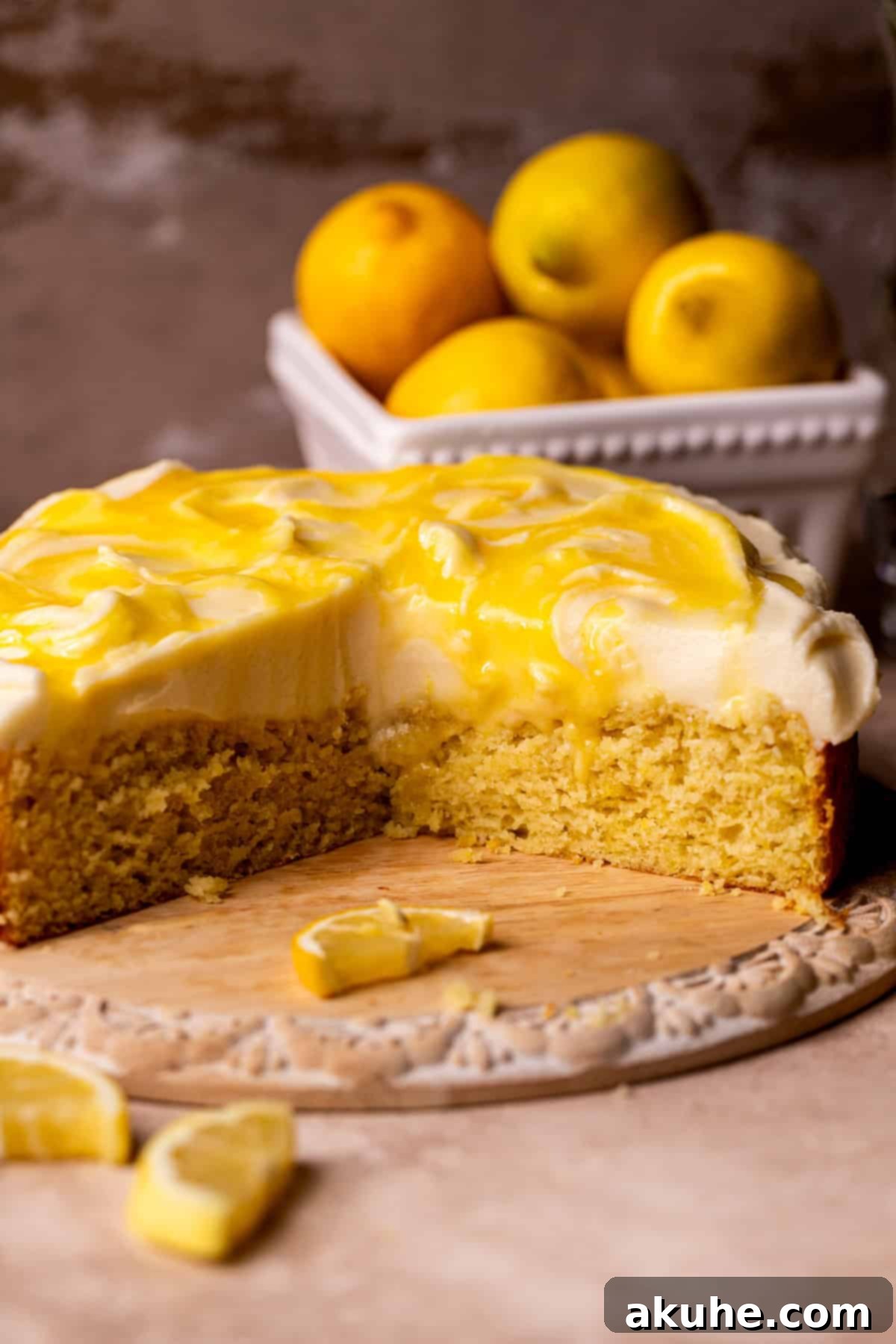The Ultimate Moist Lemon Curd Cake with Cream Cheese Frosting
Prepare to fall in love with the most exquisite lemon curd cake you’ll ever bake! This isn’t just any cake; it’s a celebration of vibrant lemon flavor, boasting an incredibly soft, tender crumb that melts in your mouth. Each slice is a symphony of textures and tastes, starting with a zesty lemon cake base, generously crowned with a luxurious cream cheese frosting, and finished with a bright, tangy swirl of homemade lemon curd. If you are a true lemon aficionado, this dessert is destined to become your new favorite. It’s perfect for springtime gatherings, summer celebrations, or simply brightening any day with its sunny disposition.
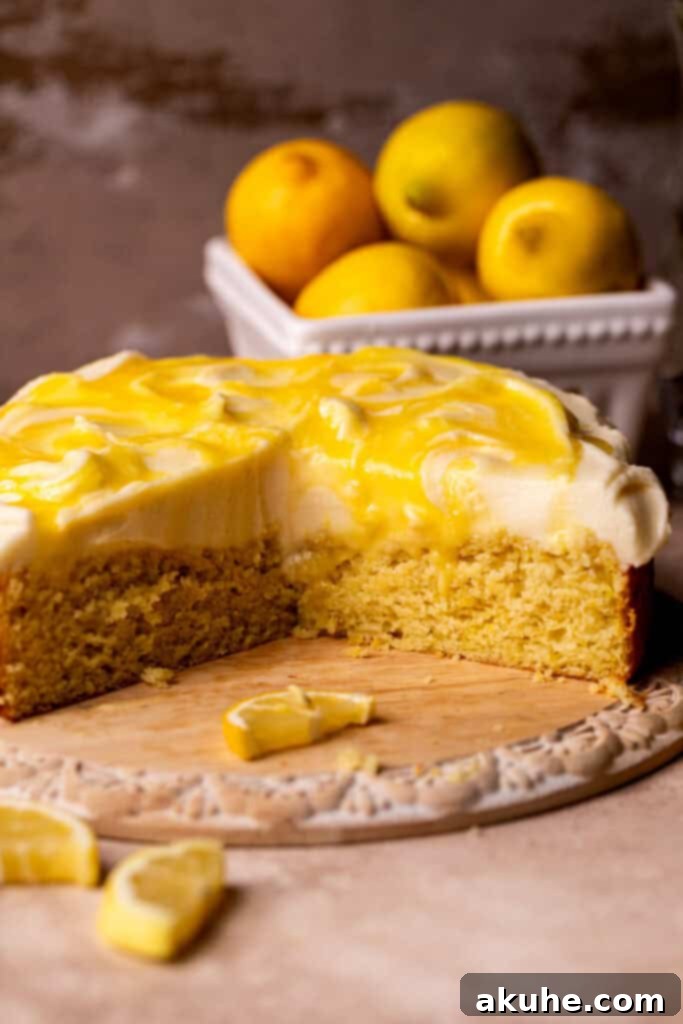
This sensational lemon cake is absolutely bursting with refreshing lemon flavor. What sets this recipe apart is the inclusion of homemade lemon curd, which elevates the entire dessert to an unparalleled level of gourmet delight. The process of making your own lemon curd is incredibly rewarding, yielding a richer, more intense citrus flavor than any store-bought alternative. This cake is an ideal choice for those moments when you crave a truly bright and uplifting flavor to mark a special occasion or simply to treat yourself. The tangy and sweet notes of the silky cream cheese frosting perfectly complement the zesty cake and sharp lemon curd, creating a harmonious balance that will captivate your palate. Seriously, if you have a deep affection for all things lemon, prepare to be utterly smitten by this magnificent cake.
To ensure your baking experience is as smooth and enjoyable as possible, I’ve compiled a comprehensive collection of tips, tricks, and step-by-step process photos. These resources are designed to guide you effortlessly through each stage of the recipe, guaranteeing a stunning and delicious result every time. For those who can’t get enough of lemon desserts, you absolutely must explore my lemon raspberry cake – another delightful creation that beautifully showcases the versatility of lemon.
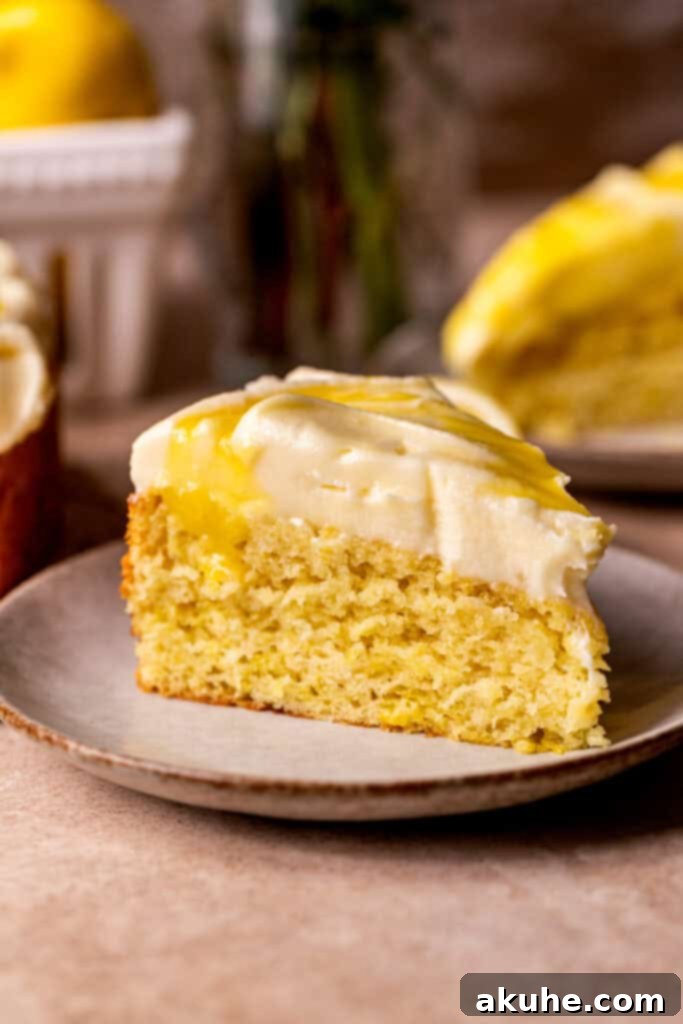
Unlocking Perfection: Essential Tips for Baking Your Lemon Curd Cake
Achieving a bakery-quality lemon curd cake at home is entirely within reach with these crucial tips. Follow these guidelines closely, and your cake will turn out just as moist, flavorful, and beautiful as the one pictured!
- Mastering Flour Measurement for a Moist Cake: The way you measure flour significantly impacts the texture of your cake. For an accurately moist and tender crumb, always scoop your all-purpose flour gently into the measuring cup, then level it off with the back of a knife or a straight edge. Avoid pressing the measuring cup directly into the flour container, as this compacts the flour, leading to an excess amount. Too much flour results in a dense, dry, and crumbly cake. For ultimate precision, consider using a kitchen scale to measure your flour by weight (typically 1 cup of all-purpose flour is around 120-125 grams).
- The Room Temperature Secret: This tip is paramount for superior baking results. Ensure all your dairy ingredients – butter, eggs, sour cream (or Greek yogurt), and buttermilk – are at room temperature before you begin mixing. Room temperature ingredients emulsify more effectively, meaning they blend together smoothly and evenly. This creates a homogeneous batter that traps air more efficiently, leading to a lighter, more aerated, and consistently moist cake. Cold ingredients can cause the batter to curdle, resulting in a heavier, less uniform texture. Plan ahead and take these ingredients out of the refrigerator at least 1-2 hours before you start baking.
- Crafting Silky Smooth Lemon Curd: The homemade lemon curd is a star component of this cake, and perfecting its texture is key. When preparing the lemon curd, it’s absolutely essential to stir constantly. This continuous agitation prevents the egg yolks from scrambling and ensures a smooth, luscious, and thick consistency. Use a whisk and maintain a medium-low heat to avoid overheating. For a more in-depth guide and troubleshooting tips, refer to my dedicated lemon curd recipe. Furthermore, allow the lemon curd to cool completely in the refrigerator before using it on your cake. Warm curd will melt your frosting and create a messy presentation.
- Flawless Cream Cheese Frosting: Cream cheese frosting is famously delicious but can sometimes be temperamental. To achieve a perfectly smooth and stable frosting, begin by beating the room temperature unsalted butter on high speed for at least 2 minutes until it’s light, fluffy, and pale in color. This process incorporates air and creates a stable base. Only then should you add the room temperature cream cheese. I’ve found that adding both butter and cream cheese at the same time can sometimes cause the mixture to separate or “split,” resulting in a grainy or lumpy frosting. By beating the butter first, you create a more forgiving environment for the cream cheese to blend in seamlessly.
Baking Process: Visual Guide to Your Lemon Curd Cake
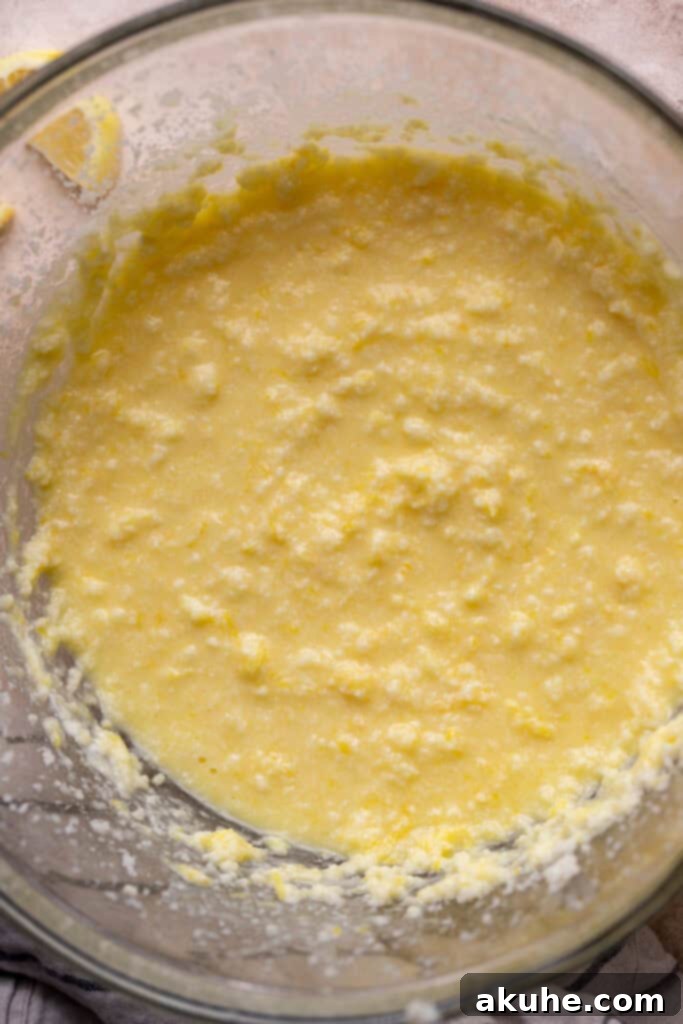
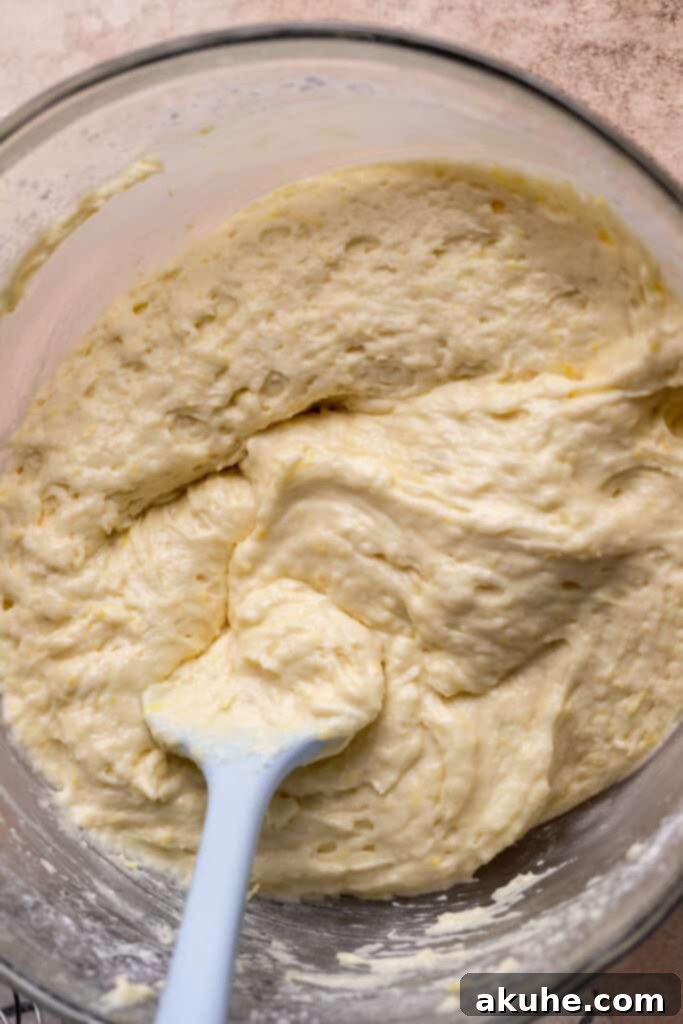
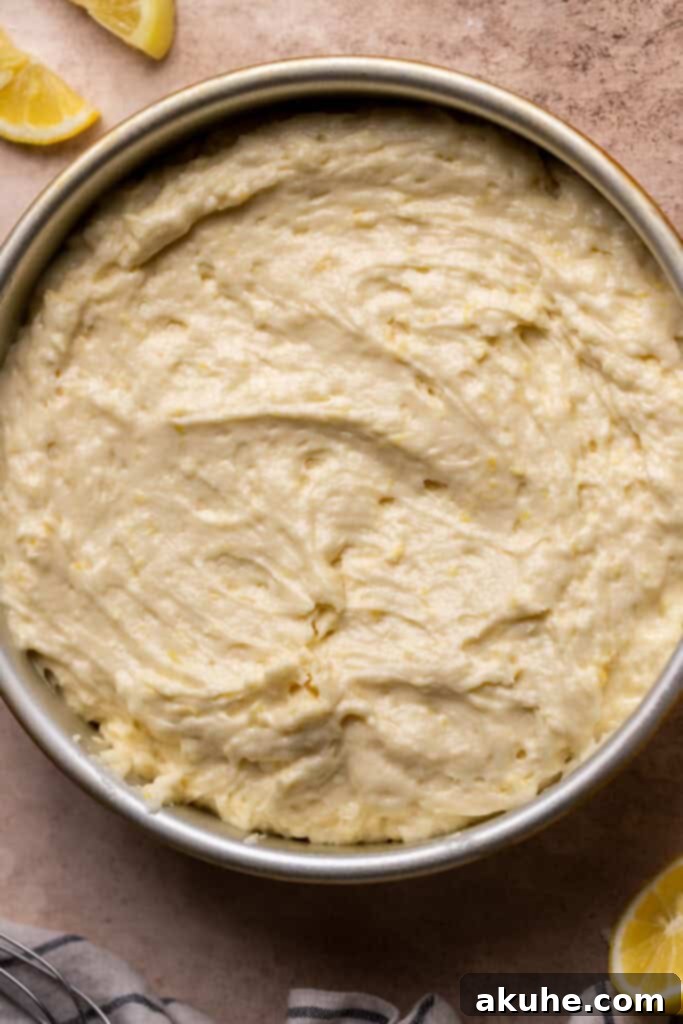
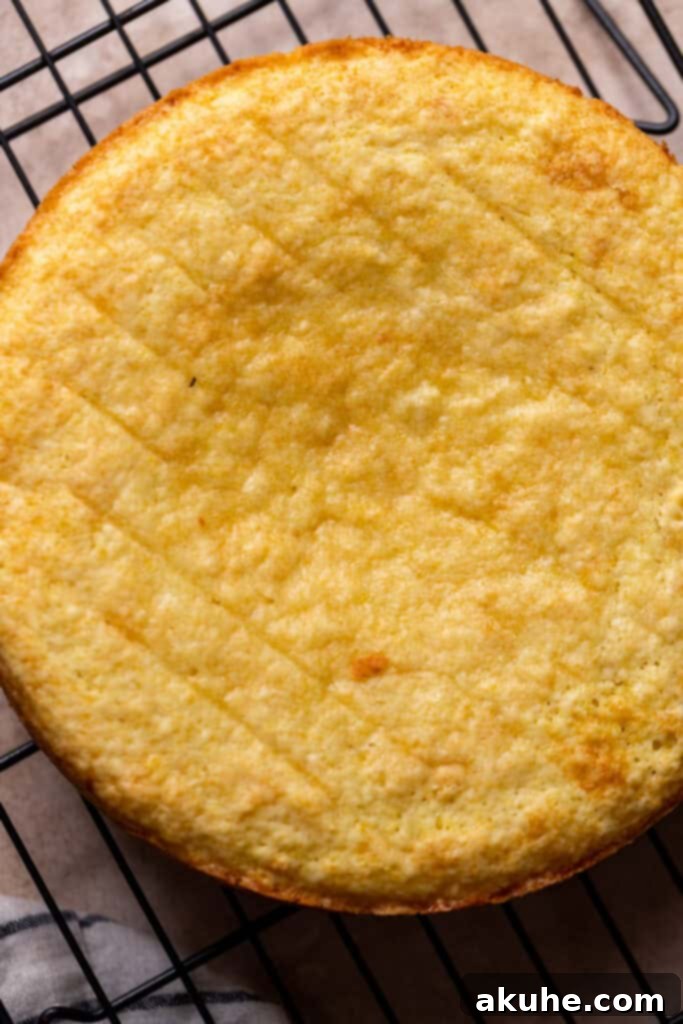

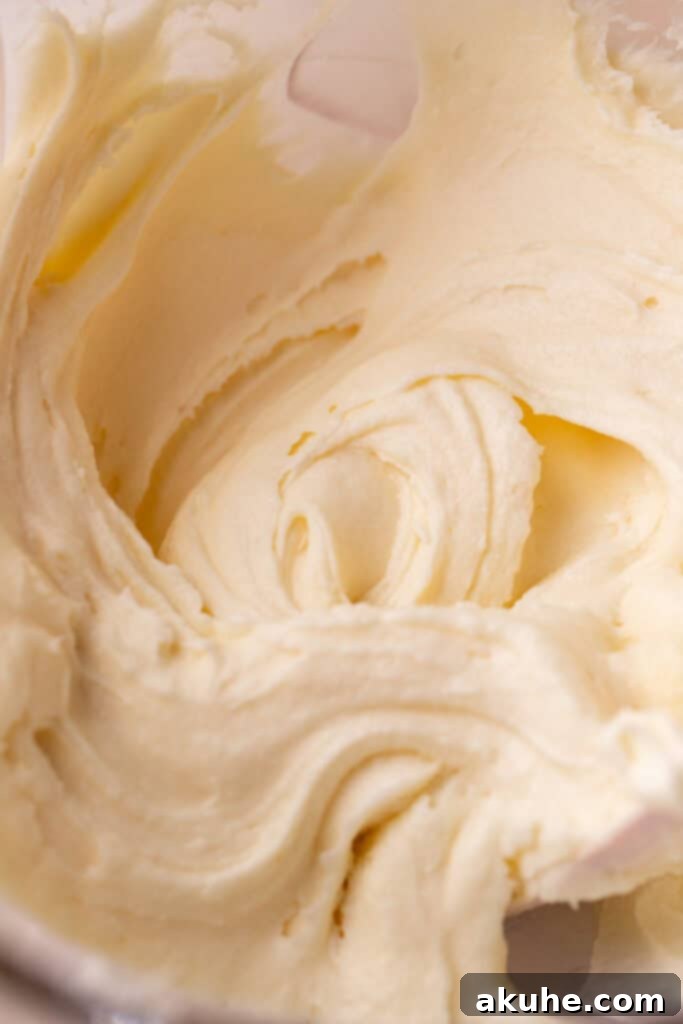
The Art of Decorating Your Lemon Curd Cake
Once your cake is completely cooled and your frosting and curd are ready, it’s time to bring your masterpiece to life. Decorating this cake is not only simple but also incredibly satisfying, resulting in a visually stunning dessert that tastes as good as it looks.
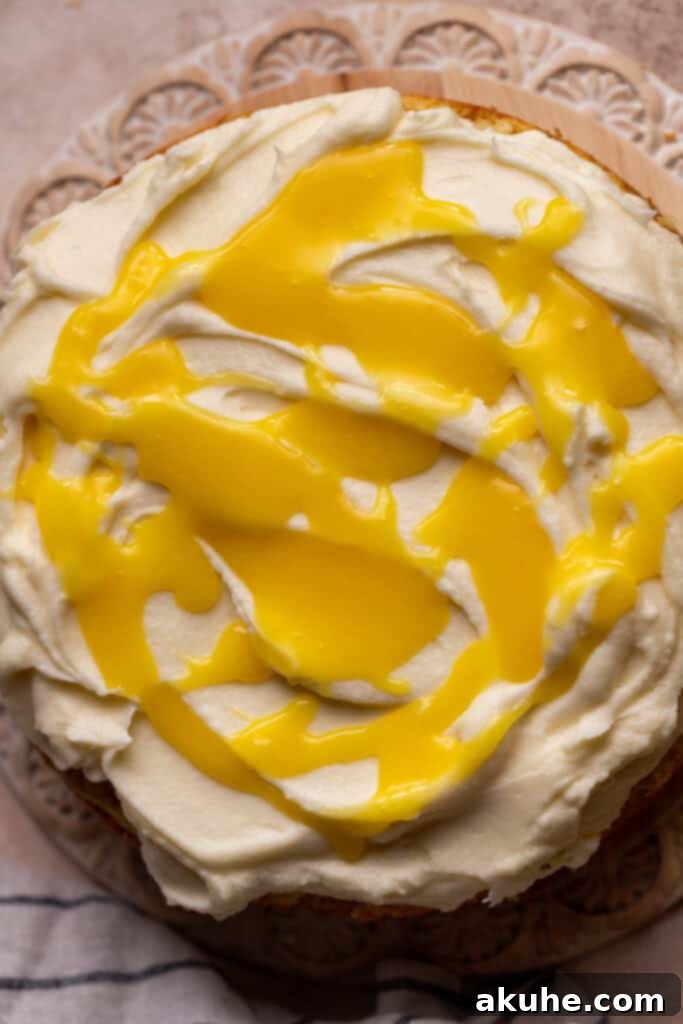

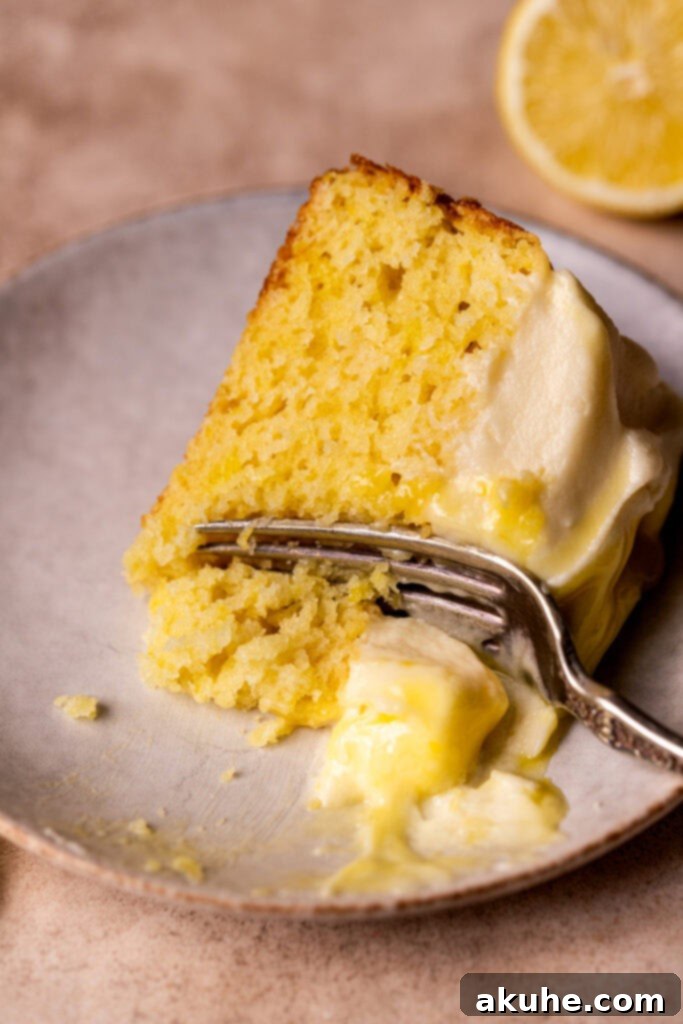
Craving more citrus-inspired delights? Don’t miss out on my delightful lemon raspberry rolls and these incredibly chewy lemon blueberry cookies for more refreshing treats.
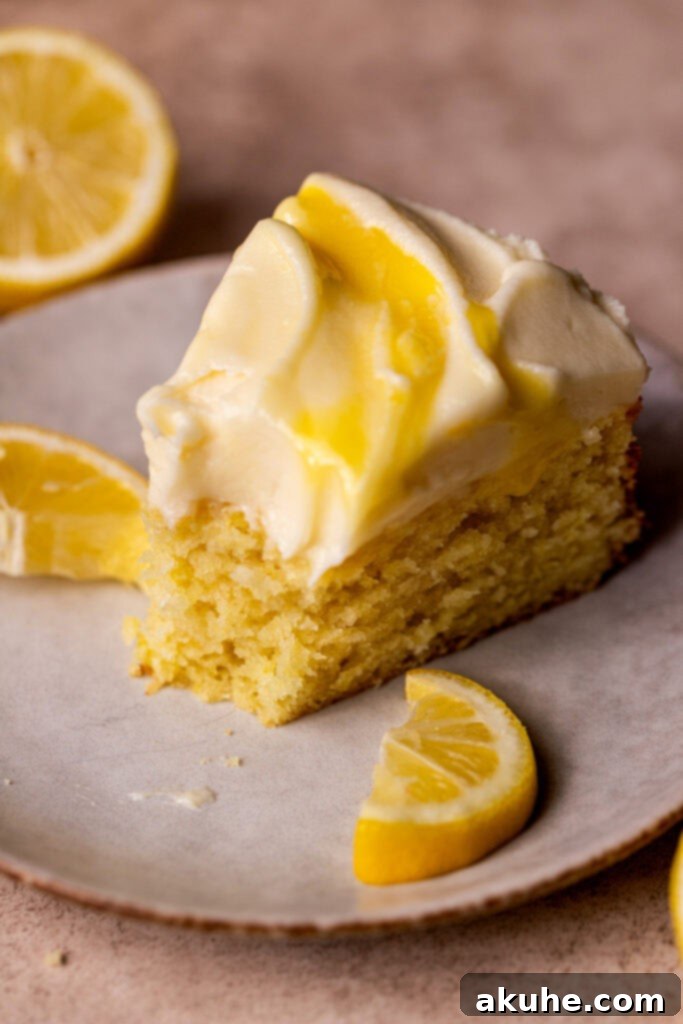
Serving and Storage Suggestions
This lemon curd cake is best served at room temperature, allowing the frosting to soften slightly and the flavors to fully meld. A perfect accompaniment is a cup of hot tea or coffee, or perhaps a glass of iced lemon tea for an extra citrusy kick. Garnish with fresh lemon slices, mint leaves, or a sprinkle of lemon zest for an added touch of elegance.
Storage:
To maintain its freshness and delightful taste, store any leftover lemon curd cake in an airtight container in the refrigerator for up to 3-4 days. The cream cheese frosting requires refrigeration, and storing it chilled helps preserve its texture and prevents spoilage. You can bring slices to room temperature for about 30 minutes before serving for optimal flavor and texture. This cake also freezes well; wrap individual slices tightly in plastic wrap and then aluminum foil. Freeze for up to 1 month. Thaw in the refrigerator overnight before bringing to room temperature to serve.
Frequently Asked Questions (FAQ)
- Can I use store-bought lemon curd?
- While homemade lemon curd is highly recommended for its superior flavor and texture, you can certainly use a good quality store-bought lemon curd if you’re short on time. Just ensure it’s a brand you trust for good flavor.
- What if my cream cheese frosting is too runny?
- This usually happens if your butter or cream cheese was too soft (over room temperature) or if you added too much liquid (like vanilla extract). Try chilling the frosting in the refrigerator for 20-30 minutes, then beating it again. If it’s still too thin, you can gradually add a tablespoon or two of sifted powdered sugar until it reaches the desired consistency.
- How do I prevent my cake from sticking to the pan?
- Proper pan preparation is crucial. Always grease your pan thoroughly with baking spray (which contains flour), then line the bottom with a parchment paper circle. Spray the parchment paper again. This creates a non-stick barrier, ensuring your cake releases easily.
- Can I make this cake in advance?
- Absolutely! The cake layers can be baked a day or two in advance, cooled completely, wrapped tightly in plastic wrap, and stored at room temperature. The lemon curd can also be made several days ahead and stored in the refrigerator. The frosting is best made closer to assembling, but even then, it can be made a day ahead and stored in the fridge, then re-whipped briefly before use.
Did you adore this recipe? Please consider leaving a star rating and review below to share your experience! We love seeing your creations, so make sure to tag me on Instagram @stephaniesweettreats. For endless baking inspiration and more delicious ideas, follow me on Pinterest.
Recipe Video: Watch & Learn!
Lemon Curd Cake Recipe
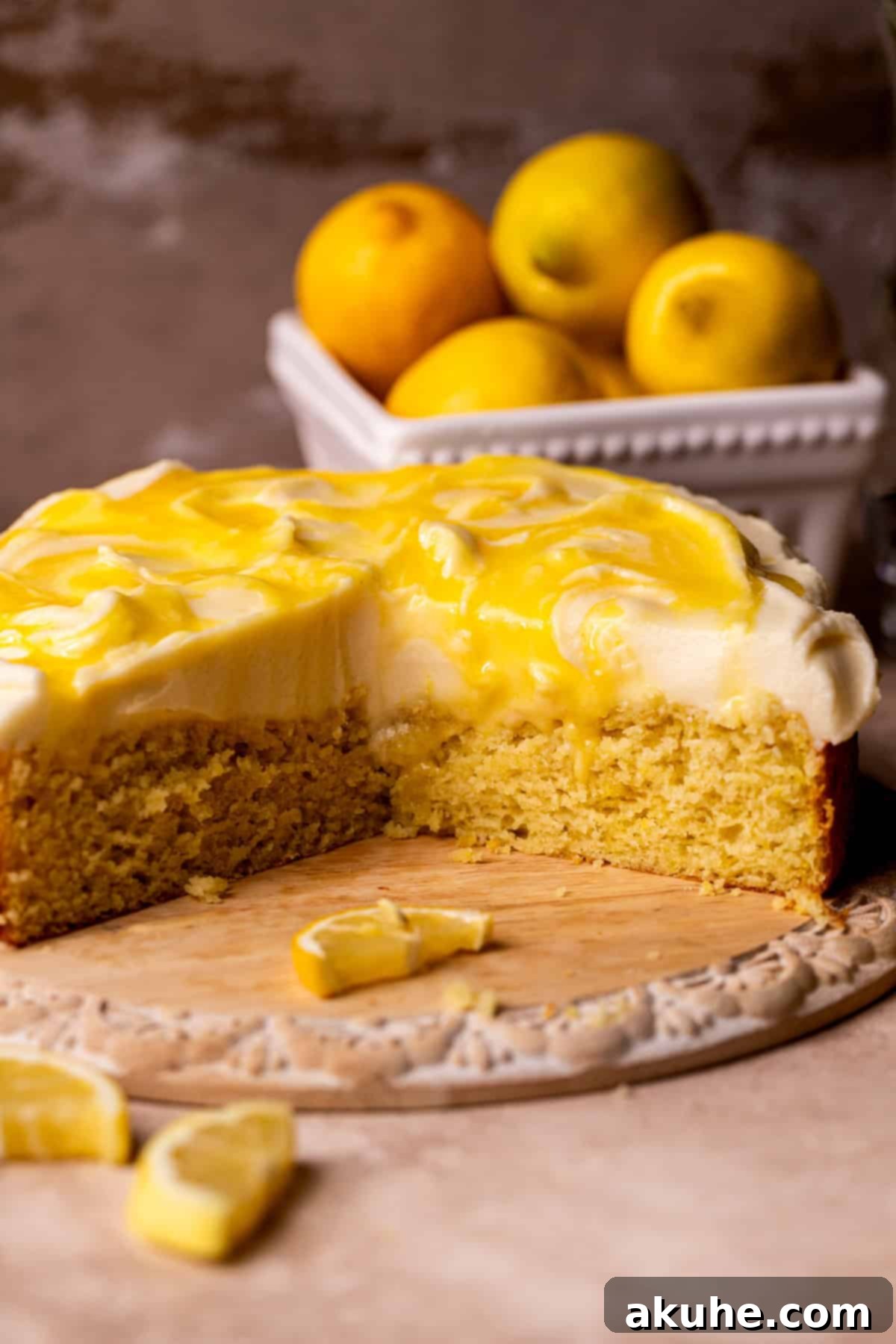
This lemon curd cake features a remarkably soft lemon cake topped with a rich cream cheese frosting and generously adorned with homemade lemon curd. It’s a bright and tangy dessert perfect for any occasion.
Author: Stephanie Rutherford
Prep Time: 1 hour
Cook Time: 45 minutes
Total Time: 1 hour 45 minutes
Yields: 16 slices
Ingredients
For the Lemon Cake:
- 1 3/4 cup All-purpose flour
- 1 tsp Baking powder
- 1/2 tsp Baking soda
- 1/2 tsp Salt
- 1/3 cup Unsalted butter, room temperature
- 2 TBSP Oil (canola or vegetable)
- 3/4 cup White granulated sugar
- 1/4 cup Sour cream (room temperature or Greek yogurt)
- 2 TBSP Lemon zest (from 2 large lemons)
- 2 TBSP Lemon juice
- 2 Large eggs, room temperature
- 1/2 cup Buttermilk, room temperature
For the Lemon Curd:
- 1/2 cup Freshly squeezed lemon juice (from 2-3 large lemons)
- 1 TBSP Lemon zest (from 1 large lemon)
- 4 Egg yolks
- 3/4 cup White granulated sugar
- Pinch of salt
- 1/2 cup Unsalted butter, cold and cubed
For the Cream Cheese Frosting:
- 1 cup Unsalted butter, room temperature
- 8 oz Cream cheese, room temperature
- 2 1/2 cups Powdered sugar, sifted
- 1 tsp Pure vanilla extract
Instructions
Lemon Cake:
- Preheat your oven to 350℉ (175°C). Prepare an 8-inch cake pan by spraying it thoroughly with baking spray. Line the bottom of the pan with a parchment paper circle and spray again. Set aside.
- In a medium-sized bowl, sift together the all-purpose flour, baking powder, baking soda, and salt. Sifting ensures no lumps and helps aerate the dry ingredients. Set this bowl aside.
- Using an electric mixer in a large mixing bowl, beat the room temperature unsalted butter, vegetable or canola oil, and granulated sugar together on high speed for approximately 2 minutes. The mixture should become light, fluffy, and visibly pale in color. This step incorporates air, contributing to the cake’s tender crumb.
- Reduce the mixer speed to medium and add in the room temperature sour cream (or Greek yogurt), fresh lemon zest, lemon juice, and large eggs. Mix until all ingredients are just combined. Take a baking rubber spatula and scrape down the sides and bottom of the bowl to ensure everything is incorporated evenly.
- Alternately add the dry ingredients mixture and the buttermilk to the wet ingredients. Begin and end with the dry ingredients. Mix on low speed just until the ingredients are combined. Be careful not to overmix, as this can develop the gluten too much, leading to a tough cake. Remove the bowl from the mixer and give it a final scrape with the spatula to ensure no dry pockets remain.
- Gently spread the cake batter evenly into your prepared 8-inch cake pan.
- Bake for 25-30 minutes, or until a wooden toothpick inserted into the center of the cake comes out clean.
- Once baked, let the cake rest in the hot pan for 10 minutes. This allows the cake to firm up slightly before you attempt to move it. After 10 minutes, carefully invert the cake onto a wire cooling rack to cool completely. It is crucial for the cake to be entirely cool before you proceed with decorating to prevent the frosting from melting.
Lemon Curd:
- You can begin preparing the lemon curd while the cake is baking. In a medium saucepan, combine the freshly squeezed lemon juice, lemon zest, egg yolks, white granulated sugar, and a pinch of salt. Place the saucepan over medium-low heat.
- Whisk the mixture constantly for 20-25 minutes. The curd will gradually thicken and a slight foam may appear on top. The key is continuous stirring to prevent the egg yolks from scrambling. The curd is ready when it coats the back of a spoon and you can run your finger across it, leaving a clear line.
- Remove the saucepan from the heat. Immediately add the cold, cubed unsalted butter to the hot curd. Whisk vigorously until the butter is completely melted and fully incorporated, resulting in a smooth, glossy curd.
- Pour the warm lemon curd into a clean bowl. Cover the surface of the curd directly with plastic wrap (this prevents a skin from forming). Place the bowl in the refrigerator to cool completely, which will take at least 2-3 hours or preferably overnight. The curd will thicken further as it chills.
Cream Cheese Frosting:
- Sift the powdered sugar into a medium bowl to remove any lumps. This step is essential for a super smooth frosting.
- Using an electric mixer, beat the room temperature unsalted butter on high speed for 2 minutes until it’s very light, fluffy, and pale.
- Add the room temperature cream cheese to the butter and mix on high speed for 1 minute, until just combined and smooth. Be careful not to overmix the cream cheese, as it can become runny.
- Gradually add about half of the sifted powdered sugar to the butter and cream cheese mixture. Mix on low speed until just combined. Then, add the remaining powdered sugar and continue mixing on low speed until fully incorporated and smooth.
- Finally, add the pure vanilla extract. Increase the mixer speed to high and beat for another minute or two until the frosting is light, airy, and creamy.
- Once your cake is completely cool, spread an even layer of the cream cheese frosting over the top. Then, take small dollops of the chilled lemon curd and artfully place them on top of the frosting.
- Using the back of a spoon or a small offset spatula, gently swirl the lemon curd into the frosting to create a beautiful marbled effect. Your Lemon Curd Cake is now ready to be served and enjoyed!
Notes:
- Flour Measurement: Always spoon and level your flour, or use a kitchen scale for accuracy. Compacted flour can lead to a dry cake.
- High Altitude Baking: If you’re baking at high altitudes, consider adding an extra 2 tablespoons of all-purpose flour to the recipe.
- Room Temperature Ingredients: For the best results, remember to pull out all dairy ingredients (butter, eggs, sour cream, buttermilk, cream cheese) from the refrigerator at least 2 hours before you plan to start baking.
Nutrition Information (per slice):
- Calories: 402kcal
- Carbohydrates: 51g
- Protein: 4g
- Fat: 30g
- Saturated Fat: 17g
- Polyunsaturated Fat: 2g
- Monounsaturated Fat: 9g
- Trans Fat: 1g
- Cholesterol: 122mg
- Sodium: 192mg
- Potassium: 66mg
- Fiber: 0.5g
- Sugar: 20g
- Vitamin A: 941IU
- Vitamin C: 2mg
- Calcium: 56mg
- Iron: 1mg
Did you make this recipe?
Please leave a star rating and review below to let us know what you thought!
